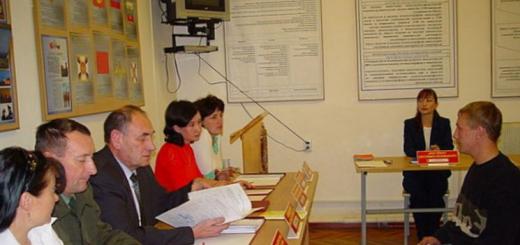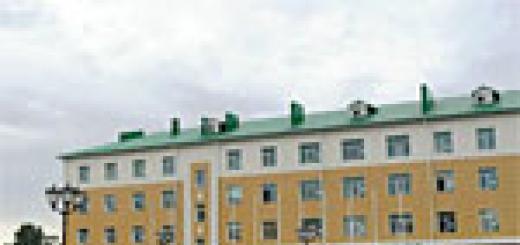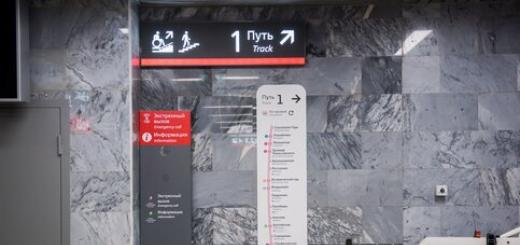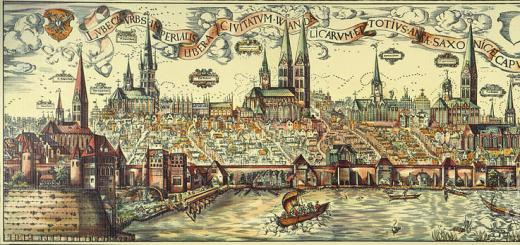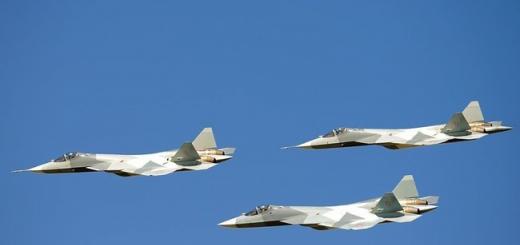Strong, emotional and infinitely touching procession of the "Immortal Regiment" annually unites millions of people around the world. How it goes in Moscow - we tell.
folk roots
At first glance, it may seem that the Immortal Regiment movement is a young phenomenon. This is partly true, but it is important to understand that in one form or another, such actions took place long before today. So, it is known that back in 1965, students of the 121st school came out onto the streets of Novosibirsk with portraits of veterans. In 1981, residents of the village of Tatsinskaya, who celebrated the centenary, marched with photographs of their dead sons in 1981, according to the plan of director Yulia Sinelnikova, who organized the holiday. Moreover, such parades were held not only in the USSR and Russia - in 1999, for example, a mournful and memorable event took place on the streets of Jerusalem.
Residents of the village of Tatsinskaya in 1981. Photo: from the archive of Yulia Sinelnikova
Dozens of actions similar in concept were spontaneously invented by the most ordinary people - all whose families were touched by the hardships of the war years. People came out with portraits of their dead relatives, because their hearts and that very historical memory that defies logical explanation told them so. In this sense, the "Immortal Regiment" has become only a synergy of local events, the design of a universal popular idea, a movement in which everyone could participate.
In Moscow, the action was first held in 2013 - then the march gathered about a thousand people. However, two years later, on the day of the 70th anniversary of the Victory, half a million people took to the streets of the capital. And a couple of months later, a separate all-Russian public civil-patriotic movement "The Immortal Regiment of Russia" arose, which to this day is engaged in preserving the people's memory of the terrible years of the Great Patriotic War.
 Action "Immortal Regiment" in 2015 in Moscow. Photo: AGN "Moscow"
Action "Immortal Regiment" in 2015 in Moscow. Photo: AGN "Moscow"
Meaning that cannot be imposed
The main thing that distinguishes the "Immortal Regiment" from other civil movements is its absolute nationality. All generations, all nationalities and all views converge here - after all, one way or another, the Great Patriotic War did not bypass anyone.
However, there is another secret. The thing is that the "Immortal Regiment" is not only about a common tragedy, but also about a personal, family one. Every year people take to the streets of the city with portraits of their relatives - those whose memory cannot be betrayed. It is she - personal memory - that is the main meaning of the "Immortal Regiment". The most real, not invented and therefore so valuable.
 During the action "Immortal Regiment" in 2018 in Moscow. Photo: Alexander Avilov/AGN "Moscow"
During the action "Immortal Regiment" in 2018 in Moscow. Photo: Alexander Avilov/AGN "Moscow"
For people, the Immortal Regiment has become a sincere occasion to study family archives, revive the history of generations and pass it on to their children, remember their roots and, importantly, digitize these memories. The production of each banner becomes a special experience for everyone, and participation in the procession is a reason for pride, first of all, for one's family.
According to the rules of the action, only their immediate relatives can carry photos of war veterans. If you don’t have data on a veteran ancestor, you can honor the memory of those who never had time to start a family, or who have no living relatives left - information about these war heroes is stored in the military commissariats and councils of veterans.
memory path
Today, the "Immortal Regiment" is more than 1000 involved cities around the world (in 2016, for example, the procession took place in more than 60 countries). In Moscow, the action takes place every year along an impressive route through the city center and to Red Square. The road is divided into several sectors.

This year the procession starts at 15:00, the gathering of participants is scheduled for 14:00.
It is not necessary to start the journey from the very beginning (that is, from the Dynamo metro station): you can join the column, for example, from the Belorusskaya, Mayakovskaya, Pushkinskaya, Chekhovskaya and Tverskaya stations. Important: the last three stations will close at 13:00, and "Mayakovskaya" - as the street fills up, so it's better to approach the chosen "point" in advance. Volunteers guide the movement (you will recognize them by a special form), which, of course, can be contacted for all information.
The route passes along Leningradsky Prospekt, st. Tverskoy, st. Tverskoy-Yamskaya, through Okhotny Ryad and Manege, and ends on Red Square. Then the procession will split up: it will be possible to turn onto Moskvoretskaya Embankment and go towards the Kitai-Gorod metro station, or go to Tretyakovskaya across the Bolshoy Moskvoretsky Bridge. The road is long, so wear comfortable shoes and dress for the weather. Organizers also advise taking a plastic bottle of water with you (they won't let you in with "glass"), although this year water will be distributed free of charge. Just in case, don't forget your passport.
 "Immortal Regiment" on Red Square in 2017. Photo: Andrey Lyubimov/AGN "Moscow"
"Immortal Regiment" on Red Square in 2017. Photo: Andrey Lyubimov/AGN "Moscow"
Special Experience
Victory Day is a sad and solemn holiday at the same time, so be prepared for the fact that you will experience a whole range of emotions along the 7-kilometer route. This year, for example, you can feel the atmosphere of wartime in specially equipped field kitchens, where soldiers' porridge and sweet tea will be distributed. Along the way, volunteers will also share with the participants souvenir paraphernalia - flags, St. George ribbons, stickers, caps and balloons.
 A volunteer distributes flags during the Immortal Regiment campaign in 2018 in Moscow. Photo: Alexander Avilov/AGN "Moscow"
A volunteer distributes flags during the Immortal Regiment campaign in 2018 in Moscow. Photo: Alexander Avilov/AGN "Moscow"
Of course, there will also be music: 500 musicians as part of concert brigades and amateur art groups are responsible for it. It will also be possible to assess the scale of the column (although the organizers themselves rightly emphasize that the Immortal Regiment is by no means a race “for indicators”) in real time: screens with video broadcasts will be installed along the entire route.
 Participants of the action in Moscow in 2018. Photo: Alexander Avilov/AGN "Moscow"
Participants of the action in Moscow in 2018. Photo: Alexander Avilov/AGN "Moscow"
How to participate
The main idea of the procession is nationality, so anyone can take part in it. No registrations and even more contributions are not required. All that is needed is to come to the gathering place with a portrait of your relative. There are no strict requirements for the design of the picture: it is important that it be a photograph (the optimal size is A4), under which the name and surname of the veteran and, if known, his military rank appear.
The photo should be placed on a hard banner - you can digitize the picture and make a layout for free at the MFC department or at any photo printing salon (some, by the way, also provide the service for free). However, if you choose the second option, be vigilant and do not allow the logo of a particular company to be placed on the banner next to the portrait - such actions do not tolerate any commerce.
 "Immortal Regiment" in Moscow in 2018. Photo: Alexander Avilov/AGN "Moscow"
"Immortal Regiment" in Moscow in 2018. Photo: Alexander Avilov/AGN "Moscow"
Year-round work
Over the years of its existence, the Immortal Regiment has become not just a march on May 9, but a whole movement recognized to preserve the memory of all participants in the Second World War: veterans, partisans, home front workers, blockade survivors, children of the war and those who gave their lives in concentration camps. Of course, one procession in this case is not enough, and therefore work to perpetuate the feat of the soldiers is ongoing. Here are just a few projects that deserve attention.
Excursions
We learn a lot about the hardships and highlights of the war from books, films, history books and museums, but sometimes we forget about the most obvious source of historical knowledge - our hometown. That is why the whole week leading up to Victory Day, Moscow will host open tours of memorable places in the capital.
This year, Muscovites and guests of the city will have seven themed walks accompanied by experienced guides.
Have you thought, for example, about how the relationship between the two star commanders of the USSR - Zhukov and Rokossovsky? Were they friends or eternal rivals? Find out the answers in the author's tour of Bella Voronova
 "Immortal Regiment" in 2018 in Moscow. Photo: Alexander Avilov/AGN "Moscow"
"Immortal Regiment" in 2018 in Moscow. Photo: Alexander Avilov/AGN "Moscow"
Which districts of the capital were the first to suffer from fascist bombs, how did the Moscow air defense differ from London, where did Napoleon flee from the Moscow fire? On May 1 and 4, during a two and a half hour excursion, you will learn what you had to look for in several history books at once.
On May 3 and 5, come to the Ernst Telman monument on Chernyakhovsky Street (Airport metro station) for an exciting excursion - to find out how domestic aviation developed and what happened to it during the Second World War.
On May 4 and 5, take a look at VDNH, where there will be an excursion under the romantic name to find out which of the designers and cosmonauts proved themselves on the fronts of the Great Patriotic War and whose calculations the Americans used in the famous Apollo program.
You will learn about how the USSR almost lost a key facility - the Losinoostrovskaya station - and who saved it from complete destruction, on May 5 and 8 on an excursion.
Did you know that the famous Memorial Complex on Poklonnaya Gora was thought about back in 1942 - before the Battle of Stalingrad and the Kursk Bulge? So strong was the confidence of the USSR in the defeat of the Nazis. You will hear about the fate of Victory Park and the symbolism of this place on an excursion.
 View of the building of the Belorussky railway station. Photo: mos.ru
View of the building of the Belorussky railway station. Photo: mos.ru
Finally, on May 7 and 8, there is a chance for two hours to immerse you in the history of the “Moscow window to Europe” - Tverskaya Zastava Square and standing on it. The military history of this place is really colorful and rich, because it was from here that soldiers and officers went to the front in the distant 1941, and it was here that victorious soldiers triumphantly arrived from Berlin in 1945.
All tours are free, but registration is required.
Internet portal polkrf.ru
What if all the heroes of the war were alive and could independently tell the whole world their story? Relatives and all those who are not indifferent diligently collect the memory of each on the site polkrf.ru, which was created using social networking technologies. Each veteran has his own "profile", which contains all the information found about him - who he was, where he served, what happened to him in the war, or how his life turned out after May 9, 1945. The project plans to unite on one platform about 300 million users - relatives of those who fought at the front or worked in the rear.
Photo: Press Service of the Mayor and the Government of Moscow. Evgeny Samarin
Participants of the commemorative procession carried portraits of relatives and friends, veterans of the Great Patriotic War, through the center of the capital.
The patriotic action "Immortal Regiment" in Moscow set a record this year. According to the Ministry of Internal Affairs, more than 750 thousand people took part in it. They carried photographs of their relatives and friends who worked in the rear and fought at the front.
The participants started from the Dynamo metro station. The column of many thousands proceeded along Leningradsky Prospekt, Tverskaya and Tverskaya-Yamskaya streets, through Okhotny Ryad, Manezhnaya and Red Square.
The participants were joined by Russian President Vladimir Putin and. The head of state came out with a portrait of his father, a front-line soldier, and the Mayor of Moscow carried a photo poster with images their relatives who died in the Great Patriotic War.
Sergei Sobyanin noted that the action "Immortal Regiment" is part of the national memory that each of us carries within himself. “There is no such family in Russia in which relatives, relatives in the war, did not die, did not participate in these battles. For me personally, it is very important that I can join this feeling - a sense of solidarity, a sense of common memory, a sense of patriotism, and pay a debt, a tribute to those people who died for us, for the future of Russia, ”he said.
“In our father’s family, four brothers went to the front. Two of them did not return. One of them died in Ukraine, defending Kharkov. The second died in the battle near Moscow, near Rzhev in February 1942. So for me, this is also a holiday, a close, dear holiday that the whole family remembers,” the Mayor of Moscow added.
Sergei Sobyanin also thanked everyone who took part in the procession, despite the inclement weather. “Hundreds of thousands came. All Tverskaya is filled with people. We try to create a holiday for them, organizing concert venues. Even this year, kitchens, tea, soldier’s porridge were installed in such a way as to at least create a festive mood for people in this inclement weather, ”he said.
According to the Mayor of Moscow, festive events continue at all major venues: in parks, squares in the city center and in districts. “In total, somewhere around 140 events, including the largest ones will be on Poklonka, where will it take place concert. Well, in the evening, as always, a big fireworks display. I invite all Muscovites to take part in the festive events,” said the Moscow Mayor.
The Immortal Regiment campaign has been running since 2007. For the first time in Tomsk, on Victory Day, local residents took to the streets of the city with photo portraits of their relatives-front-line soldiers. More than 6,000 Tomsk citizens took part in the solemn procession. In 2015, about 12 million people took part in the Immortal Regiment campaign across Russia. Last year, twice as many participants came out with photo portraits of their veteran relatives - about 24 million people, and the action itself was held in 50 countries. In Moscow . Muscovites and guests of the capital then carried over a million portraits of the defenders of the Motherland.
You can also perpetuate the memory of your relative - a participant in the Great Patriotic War, tell about his life, show photos on the website "Immortal Regiment. Moscow" . There are already more than 178 thousand entries in the electronic Book of Memory about the participants of the Great Patriotic War and home front workers.
The authorities of Ecuador have deprived Julian Assange of asylum in the London embassy. The founder of WikiLeaks is detained by the British police, and this has already been called the biggest betrayal in the history of Ecuador. Why is Assange being avenged and what awaits him?
Julian Assange, a programmer and journalist from Australia, became widely known after the website WikiLeaks, founded by him, published secret documents of the US State Department, as well as materials related to military operations in Iraq and Afghanistan in 2010.
But it was quite difficult to find out who the policemen, supporting by the arms, were taking out of the building. Assange grew a beard and did not look at all like the energetic man that he had so far presented in photographs.
According to Ecuadorian President Lenin Moreno, Assange's asylum was denied because of his repeated violations of international conventions.
He is expected to remain at a police station in central London until he appears before Westminster Magistrates' Court.
Why the President of Ecuador is accused of betrayal
Former President of Ecuador Rafael Correa called the decision of the current government the biggest betrayal in the history of the country. "What he (Moreno. - Ed.) did is a crime that humanity will never forget," Correa said.
London, on the contrary, thanked Moreno. The British Foreign Office believes that justice has prevailed. The representative of the Russian diplomatic department, Maria Zakharova, has a different opinion. "The hand of 'democracy' is squeezing the throat of freedom," she said. The Kremlin expressed the hope that the rights of the arrested person would be respected.
Ecuador harbored Assange because the former president was center-left, critical of U.S. policy, and welcomed WikiLeaks' release of classified documents on the wars in Iraq and Afghanistan. Even before the Internet activist needed asylum, he managed to get to know Correa personally: he interviewed him for the Russia Today channel.
However, in 2017, the government in Ecuador changed, the country headed for rapprochement with the United States. The new president called Assange "a stone in the shoe" and immediately made it clear that his stay on the territory of the embassy would not be delayed.
According to Correa, the moment of truth came at the end of June last year, when US Vice President Michael Pence arrived in Ecuador on a visit. Then everything was decided. “You can be sure: Lenin is just a hypocrite. He has already agreed with the Americans about the fate of Assange. And now he is trying to make us swallow the pill, saying that Ecuador allegedly continues the dialogue,” Correa said in an interview with Russia Today.
How Assange made new enemies
The day before his arrest, WikiLeaks editor-in-chief Kristin Hrafnsson said that Assange was under total surveillance. "WikiLeaks uncovered a massive spy operation against Julian Assange at the Ecuadorian embassy," he said. According to him, cameras and voice recorders were placed around Assange, and the information received was transmitted to the administration of Donald Trump.
Hrafnsson specified that Assange was going to be expelled from the embassy a week earlier. This did not happen only because WikiLeaks made this information public. A high-ranking source told the portal about the plans of the Ecuadorian authorities, but the head of the Ecuadorian Foreign Ministry, Jose Valencia, denied the rumors.
Assange's expulsion was preceded by a corruption scandal involving Moreno. In February, WikiLeaks published the INA Papers package, which traced the operations of the offshore company INA Investment, founded by the brother of the Ecuadorian leader. In Quito, they said that this was a plot by Assange with Venezuelan President Nicolas Maduro and former head of Ecuador Rafael Correa to overthrow Moreno.
In early April, Moreno complained about Assange's behavior in Ecuador's London mission. “We have to protect the life of Mr. Assange, but he has already crossed all the lines in terms of violating the agreement that we came to with him,” the president said. “This does not mean that he cannot speak freely, but he cannot lie and hack ". At the same time, back in February last year, it became known that Assange at the embassy was deprived of the opportunity to interact with the outside world, in particular, he was turned off access to the Internet.
Why Sweden stopped persecuting Assange
At the end of last year, Western media, citing sources, reported that Assange would be charged in the United States. This was never officially confirmed, but it was precisely because of Washington's position that Assange had to take refuge in the Ecuadorian embassy six years ago.
Sweden, in May 2017, stopped investigating two cases of rape in which the founder of the portal was accused. Assange demanded compensation from the country's government for legal costs in the amount of 900,000 euros.
Earlier, in 2015, Swedish prosecutors also dropped three charges against him due to the statute of limitations.
Where did the rape investigation lead?
Assange arrived in Sweden in the summer of 2010, hoping to get protection from US authorities. But he was under investigation for rape. In November 2010, a warrant for his arrest was issued in Stockholm, and Assange was put on the international wanted list. He was detained in London, but was soon released on bail of 240 thousand pounds.
In February 2011, a British court ruled to extradite Assange to Sweden, followed by a series of successful appeals for the founder of WikiLeaks.
The British authorities placed him under house arrest before deciding to extradite him to Sweden. Breaking his promise to the authorities, Assange asked for asylum in the Ecuadorian embassy, which was granted to him. Since then, the UK has had its own grievances against the founder of WikiLeaks.
What's next for Assange?
The man was re-arrested following a U.S. extradition request for publishing classified documents, police said. At the same time, Deputy Foreign Minister Alan Duncan said that Assange would not be sent to the United States if he faced the death penalty there.
In the UK, Assange is likely to appear in court on the afternoon of 11 April. This is stated on the WikiLeaks Twitter page. It is likely that the British authorities will seek a maximum sentence of 12 months, the man's mother said, citing his lawyer.
At the same time, the Swedish prosecutor's office is considering reopening the investigation into the rape allegation. Lawyer Elizabeth Massey Fritz, who represented the interests of the victim, will seek this.
On May 9, the Immortal Regiment procession will take place on Red Square - a civil initiative to perpetuate the feat of the soldiers of the Great Patriotic War, preserve the memory of the valor and heroism of the people, as well as patriotic education of present and future generations.
Participation in the action implies that every citizen who honors the memory of his veteran relative goes to the Victory Parade with his photograph, taking a place in the Immortal Regiment column.
To join the procession of the Immortal Regiment, you just need to come with a portrait of your relative - a participant in the Great Patriotic War, who contributed to the victory over fascism, both at the front and in the rear.
Driving route
From the metro station "Dinamo" along Leningradsky Prospekt, Tverskaya Street, Tverskaya-Yamskaya Street, through Okhotny Ryad, Manezhnaya and Red Square. Further, the procession column is distributed along the Moskvoretskaya Embankment and the Bolshoi Moskvoretsky Bridge.
The history of the action began in 2007 in Tyumen and was called the "Parade of Winners". It began to be called the “Immortal Regiment” from the moment the 2012 march was held in Tomsk, and already in 2013 it spread to 120 cities. In 2014, residents of 500 cities in seven countries took to the streets with portraits of front-line soldiers. Since 2015, the action has officially become nationwide.
Residents of Russia and the CIS are preparing for the celebration of Victory Day in the Great Patriotic War, which will be held on May 9. On this day, many Russian cities will host a patriotic action called the Immortal Regiment, in which many would like to take part.
The "Immortal Regiment" in its current form was born recently. This does not mean that earlier the Russian people neglected the honoring of veterans. Just in 2012, the idea arose to perpetuate the memory of the heroes of the war in a special way, giving them their own victory parade.
The idea belonged to Tomsk journalists. S. Lapenkov, S. Kolotovikin and I. Dmitriev knew firsthand about the desire of people to carry portraits of their relatives as part of an honorary procession. It was only necessary to organize actions that were spontaneously held in the cities of Russia before, and also to give them an official status. Now the project has its own charter, headquarters and rules. Anyone can:
- take part in the procession;
- make a banner using typographic design;
- contribute to the design of the event;
- become a volunteer of the organization;
- provide information support to the project.
Gathering place of the Immortal Regiment-2017 in Moscow
After the parade in honor of the 72nd anniversary of the victory marches along the cobblestones of Red Square, shaking the ground, military equipment rumbles, air power soars into the sky and festive performances take place in different parts of the city, the march of memory will begin. At 15.00 the columns of immortal heroes will be drawn along Tverskaya.
Driving route
From the metro station "Dinamo" along Leningradsky Prospekt, Tverskaya Street, Tverskaya-Yamskaya Street, through Okhotny Ryad, Manezhnaya and Red Square. Further, the procession column is distributed along the Moskvoretskaya Embankment and the Bolshoi Moskvoretsky Bridge. Source -, the best events in Moscow.
How to take part in the Immortal Regiment-2017 in Moscow
To join the procession of the Immortal Regiment, you just need to come with a portrait of your relative - a participant in the Great Patriotic War, who contributed to the victory over fascism, both at the front and in the rear.
It should immediately be clarified that there are no special rules when designing a banner, since participation in the action is an exclusively voluntary decision of a person. Sizes are not regulated, there are no manufacturing standards. However, the size of the plaque and photo must be taken into account based on the size of the original photo of the veteran so that it does not lose quality when scaling.
Volunteers are also attracted to the Immortal Regiment 2017, whose tasks include taking pictures, adjusting the movement of the column along a given route, distributing St. George ribbons, flags and other attributes.

